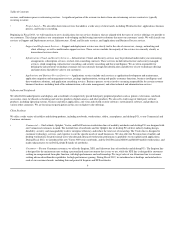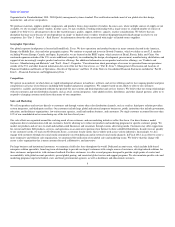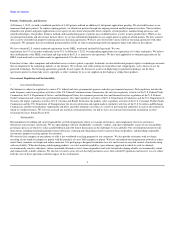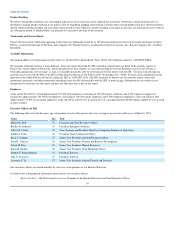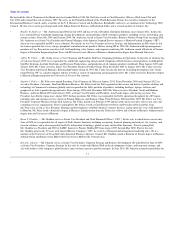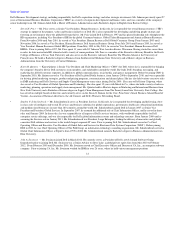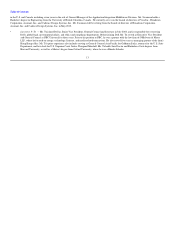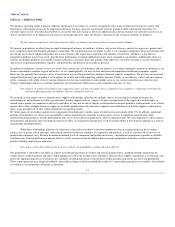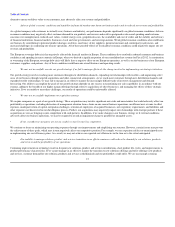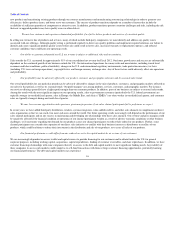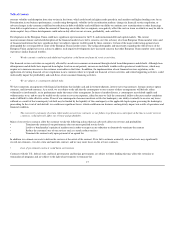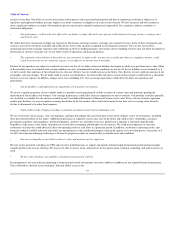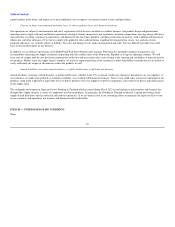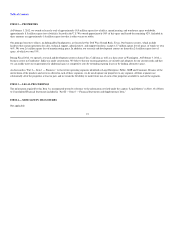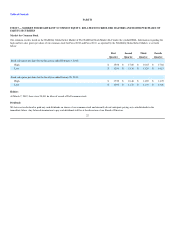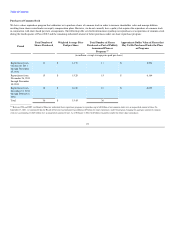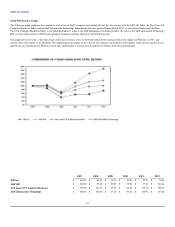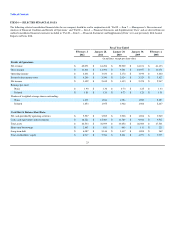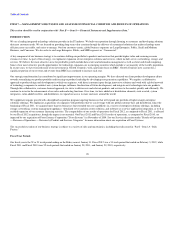Dell 2011 Annual Report Download - page 18
Download and view the complete annual report
Please find page 18 of the 2011 Dell annual report below. You can navigate through the pages in the report by either clicking on the pages listed below, or by using the keyword search tool below to find specific information within the annual report.
Table of Contents
new products and transitioning existing products through our contract manufacturers and manufacturing outsourcing relationships in order to generate cost
efficiencies, deliver products faster, and better serve our customers. The success of product transitions depends on a number of factors that include the
availability of sufficient quantities of components at attractive costs. In addition, product transitions present execution challenges and risks, including the risk
that new or upgraded products may have quality issues or other defects.
• We may lose customers and experience diminished profitability if we fail to deliver products and services of consistent quality.
In selling our extensive line of products and services, many of which include third-party components, we must identify and address any quality issues
associated with our offerings. Although quality testing is performed regularly to detect any quality problems and implement required solutions, our failure to
identify and correct significant product quality issues before sale could result in lower sales, increased warranty or replacement expenses, and reduced
customer confidence that could harm our operating results.
•Our ability to generate substantial non-U.S. net revenue is subject to additional risks and uncertainties.
Sales outside the U.S. accounted for approximately 51% of our consolidated net revenue for Fiscal 2012. Our future growth rates and success are substantially
dependent on the continued growth of our business outside the U.S. Our international operations face many risks and uncertainties, including varied local
economic and labor conditions, political instability, changes in the U.S. and international regulatory environments, trade protection measures, tax laws
(including U.S. taxes on foreign operations), copyright levies, and foreign currency exchange rates. Any of these factors could adversely affect our operations
and profitability.
•Our profitability may be adversely affected by our product, customer, and geographic sales mix and by seasonal sales trends.
Our overall profitability for any particular period may be adversely affected by changes in the mix of products, customers, and geographic markets reflected in
our sales for that period, as well as by seasonal trends. Our profit margins vary among products, services, customers, and geographic markets. For instance,
our services offerings generally have a higher profit margin than our consumer products. In addition, parts of our business are subject to seasonal sales trends.
Among the trends with the most significant impact on our operating results, sales to government customers (particularly the U.S. federal government) are
typically stronger in our third fiscal quarter, sales in Europe, the Middle East, and Africa ("EMEA") are often weaker in our third fiscal quarter, and consumer
sales are typically strongest during our fourth fiscal quarter.
•We may lose revenue opportunities and experience gross margin pressure if our sales channel participants fail to perform as we expect.
In recent years, we have added third-party distributors, retailers, systems integrators, value-added resellers, and other sales channels to complement our direct
sales organization so that we can reach even more end-users around the world. Our future operating results increasingly will depend on the performance of our
sales channel participants and on our success in maintaining and developing our relationships with those sales channels. Our revenue and gross margins could
be negatively affected if the financial condition or operations of our channel participants weaken as a result of adverse economic conditions or other business
challenges, or if uncertainty regarding the demand for our products causes our channel participants to reduce their orders for our products. Further, some
channel participants may consider the expansion of our direct sales initiatives to conflict with their business interests as distributors or resellers of our
products, which could lead them to reduce their investment in the distribution and sale of our products, or to cease all sales of our products.
•Our financial performance could suffer from any reduced access to the capital markets by us or some of our customers.
We are increasingly dependent on access to debt and capital sources to provide financing for our customers and to obtain funds in the U.S. for general
corporate purposes, including working capital, acquisitions, capital expenditures, funding of customer receivables, and share repurchases. In addition, we have
customer financing relationships with some companies that rely on access to the debt and capital markets to meet significant funding needs. Any inability of
these companies to access such markets could compel us to self-fund transactions with them or forgo customer financing opportunities, potentially harming
our financial performance. The debt and capital markets may experience
16


